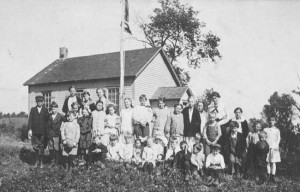Years ago, education was only available to the highly privileged classes. In the 1800’s the need to educate the illiterate and provide skills training was incredibly high. The result of this was one room school houses that were made available for anyone who needed an education. This form of one room schooling (which would now be referred to as a combined classroom), although obsolete today, lasted until the early 1900’s (Proehl, Douglas, Elias, Johnson, & Westsmith, 2013, p. 420).
As time progressed, multi-grade classrooms were still largely viewed as classes that were combined out of necessity rather than academic function. However true this was and may still be, there are many recorded instances of combined classrooms working even better than single grade classrooms. Pratt conducted a study between 1948 and 1983 and “concluded that there was no consistent academic benefit to age segregation—the dominant school structure in North American schools—but rather there are some affective and social advantages of multiage groupings” (Proehl et al., 2013, p. 420). J.L. Thomas supports her opinion of primary combined classrooms with a large amount or research saying, “combination students exhibit more positive and fewer negative behaviors than single-grade students… [there is] evidence that 1–2 classes contain more academically advanced students than other classes” (2012, p. 1063).
Throughout the history of teaching, the positive stance taken by many teachers and researchers on behalf of CC’s prove that this is indeed a topic that has and will have a strong influence on the learning of students. Taking this information into consideration it is time we examine our school system as it is in the present.

